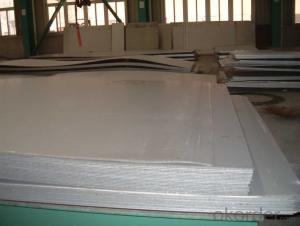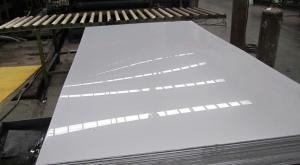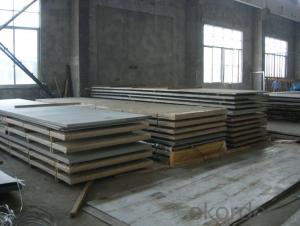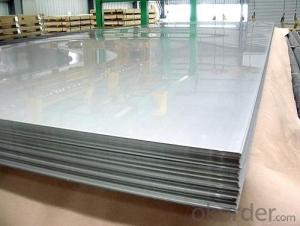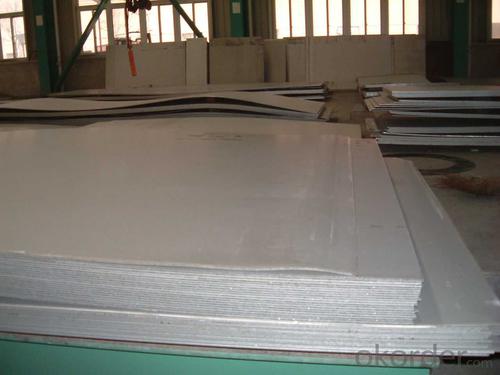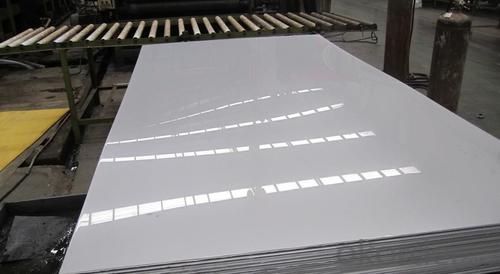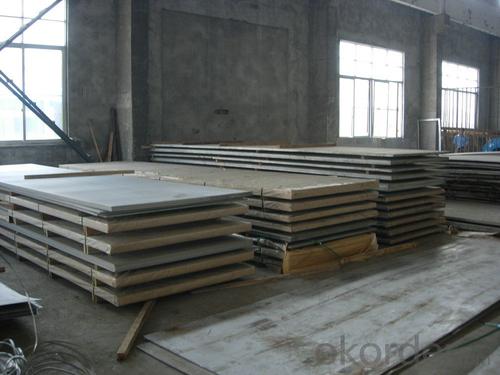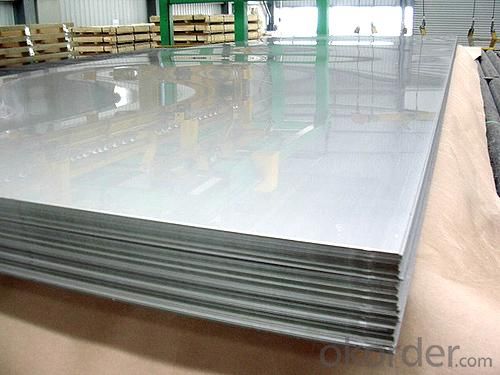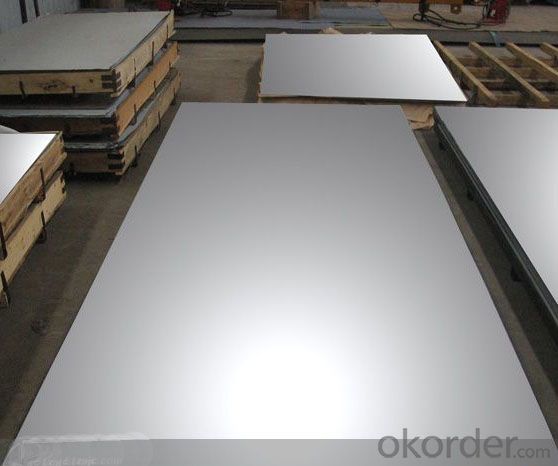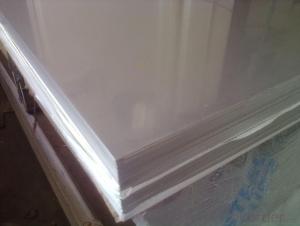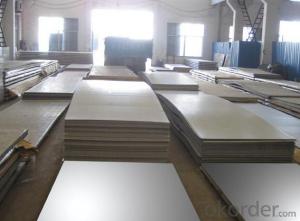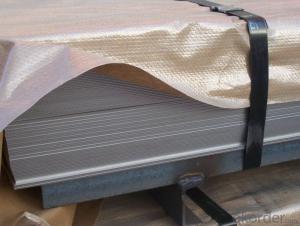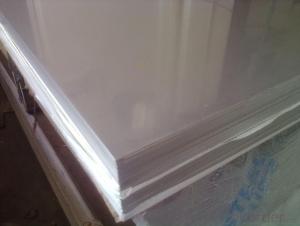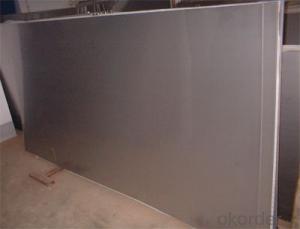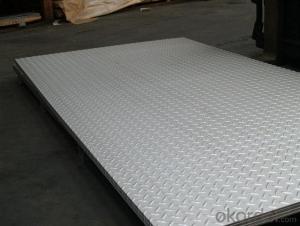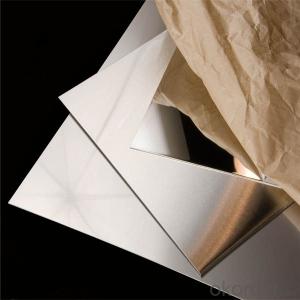Stainless Steel plate and sheet 304 with plenty stock
- Loading Port:
- Shanghai
- Payment Terms:
- TT OR LC
- Min Order Qty:
- 500 m.t.
- Supply Capability:
- 5000000 m.t./month
OKorder Service Pledge
OKorder Financial Service
You Might Also Like
Hot sale stainless steel sheet 201/202/304/304l/316/316l/430
Description of Stainless Steel Sheet:
Description | steel sheet,hot rolled steel sheet,cold rolled steel sheet, steel sheet,sheet,steel plate |
Standard | ASME, ASTM, EN ,BS,GB,DIN, JIS etc |
Application | Steel sheet applies to construction field, ships building industry, petroleum & chemical industries, war and electricity industries, food processing and medical industry, boiler heat exchanger, machinery and hardware fields. |
Packaging | Standard export sea-worthy packing |
Delivery time | 10-30 days |
Quality | No.1 |
Productivity | 500 tons/Day |
Note | Our company has cooperative relation between the domestic agents. Stainless steel sheet can be made accordingto the customers requirements. Fasten delivery. Quality assured. |
Contacts | If you have any question,please feel free contact me. |
Stainless steel sheet surface finish characteristics
Surface finish | Characteristics and application |
2B | The surface brightness and flatness of no2B is better than no2D. then through a special surface treatment to improve its mechanical properties,No2B could nearly satisfy comprehensive uses. |
No.1 | Polished with abrasive belt of grit#100-#200, have better brightness with discontinuous coarse stria, used as inner and external ornaments for building, electrical appliances and kitchen utensils etc. |
No.4 | Polished with abrasive belt of grit #150-#180,have better brightness with discontinuous coarse stria, but thinner than No3, are used as bathtub buildings inner and external ornaments electrical appliances kitchen utensils and food processing equipment etc. |
HL | Polished with abrasive belt of grit #150-#320 on the NO.4 finish and has continuous streaks, mainly used as buildings ornaments elevators, door of building, frontal plate etc. |
BA | Cold rolled, bright annealed and skin-passed, the product have excellent brightness and good reflexivity like mirror, kitchen apparatus, ornament etc. |
8K | The product have excellent brightness and prefer reflexivity can to be the mirror. |
Main Features of stainless steel sheet :
•Escalator, Elevator, Doors
•Furniture
•Production tools, Kitchen appliances, freezers, cold rooms
•Auto Parts
•Machinery and Packaging
•Equipment and Medical devices
•Transport system
Product Details:
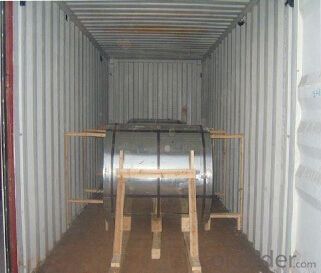
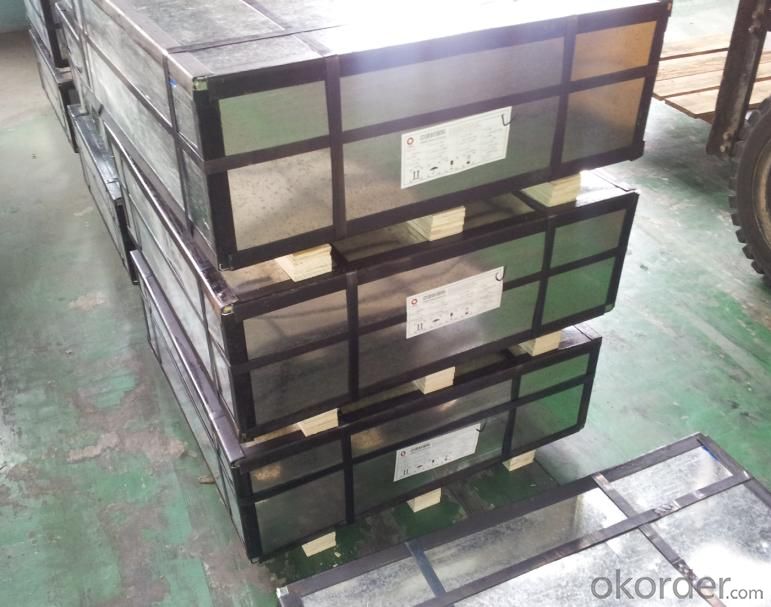
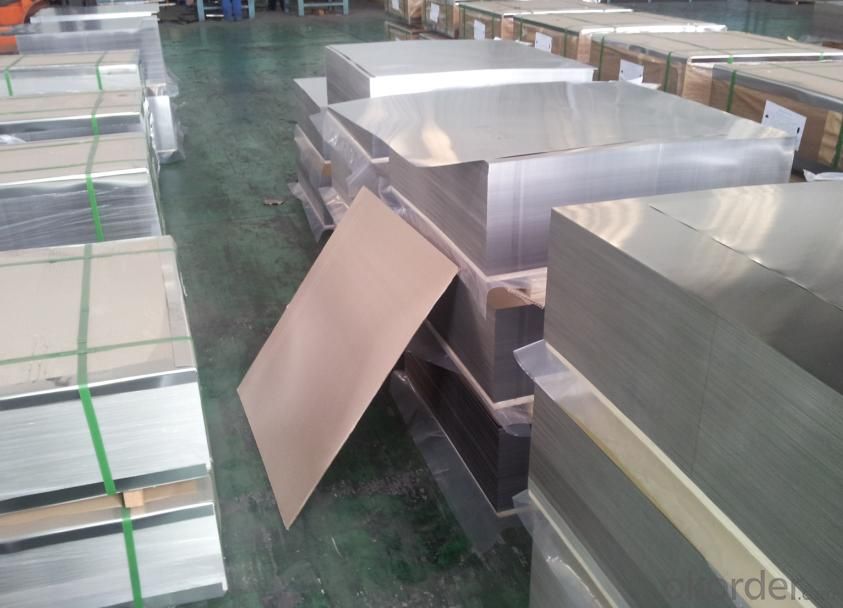
Sandard Seaworth Packing(wooden packing with water proof paper)
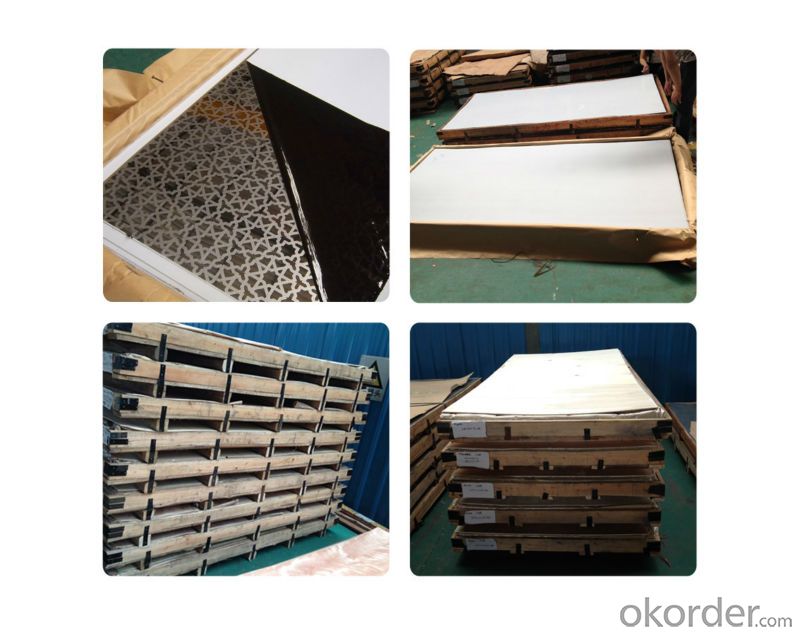
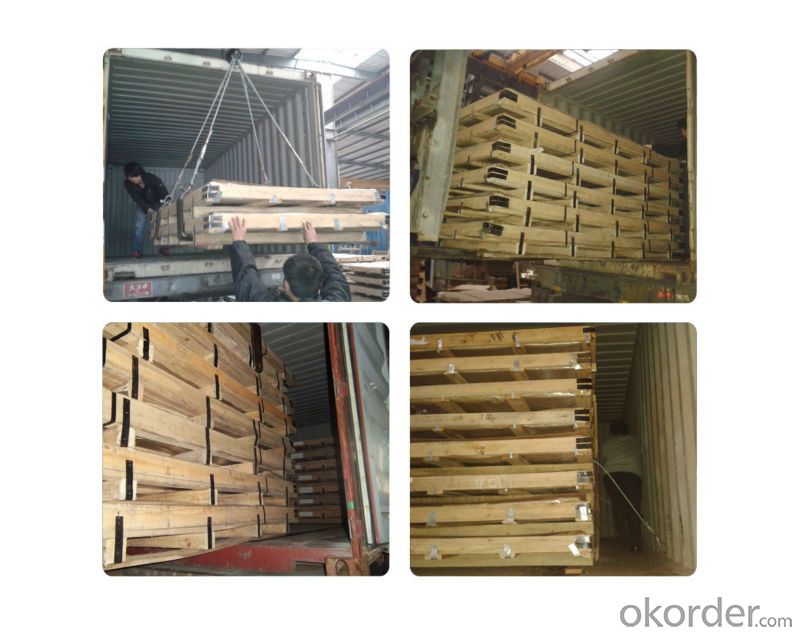
FAQ:
1. What's the quality?
very fine
2. How long get reply?
within 24 hours
If you have any question about stainless steel sheets,donot forget to sending the email to Us! You will get the competitive Price and have a very good experience about the Buying Process! CNBM International Corporation is always your trustful friend!
- Q: How do you prevent fingerprints and smudges on stainless steel sheets?
- To prevent fingerprints and smudges on stainless steel sheets, there are a few effective methods you can follow: 1. Clean with microfiber cloth: Use a soft microfiber cloth to wipe the stainless steel surface. Microfiber is gentle and won't leave any scratches or streaks. Avoid using rough materials like paper towels or abrasive sponges. 2. Use a stainless steel cleaner: Invest in a high-quality stainless steel cleaner specifically designed for removing fingerprints and smudges. Follow the instructions on the cleaner and apply it evenly on the surface using a cloth or a sponge. Wipe off any excess cleaner with a clean cloth. 3. Apply baby oil or mineral oil: Apply a small amount of baby oil or mineral oil on a cloth and rub it gently over the stainless steel surface. This will create a thin protective layer that helps prevent fingerprints and smudges from sticking to the metal. 4. Avoid touching the surface with bare hands: One of the main causes of fingerprints and smudges is direct contact with hands. Try to handle stainless steel sheets with clean, dry hands or wear gloves if necessary. This will help minimize the transfer of oils and residue onto the surface. 5. Regular cleaning routine: Establish a regular cleaning routine for your stainless steel sheets. Wipe them down with a microfiber cloth or stainless steel cleaner at least once a week, or more frequently in high-traffic areas. This will prevent the buildup of oils and grime, reducing the chances of fingerprints and smudges. By following these methods, you can effectively prevent fingerprints and smudges on stainless steel sheets, keeping them looking clean and shiny for an extended period of time.
- Q: What is the elongation of stainless steel sheets?
- When stainless steel sheets are subjected to tensile forces, their ability to stretch or deform without breaking is known as elongation. This property is measured as a percentage of the original length of the sheet that can be stretched before it fractures. The elongation of stainless steel sheets can vary depending on the grade of stainless steel and the way it is manufactured. In general, stainless steel sheets have a higher elongation compared to metals like carbon steel because they are more ductile. However, the specific elongation value can vary based on factors such as the grade, thickness, and tempering of the stainless steel sheet.
- Q: What are the benefits of using perforated stainless steel sheets in ventilation systems?
- Perforated stainless steel sheets bring several advantages to ventilation systems. Firstly, they ensure optimal airflow and ventilation. The small holes in the sheets allow for the unrestricted movement of air, all while maintaining their structural integrity. This guarantees efficient and effective ventilation in any space. Moreover, perforated stainless steel sheets possess remarkable durability and resistance to corrosion. Stainless steel is renowned for its strength and long lifespan, making it an ideal material for ventilation systems. The holes in the sheets do not compromise their structural integrity, enabling them to withstand harsh environmental conditions and retain their functionality for an extended period of time. Additionally, perforated stainless steel sheets provide an aesthetically pleasing appearance. The perforations can be designed in various patterns and shapes, enhancing the visual appeal of the ventilation system. This is particularly advantageous in commercial or industrial settings where the ventilation system is exposed and visible. Furthermore, maintenance and cleaning of perforated stainless steel sheets are effortless. The smooth surface of stainless steel allows for easy removal of dust, dirt, and other contaminants, ensuring a high level of cleanliness in the ventilation system. This is crucial for maintaining good air quality and preventing the accumulation of pollutants. Lastly, perforated stainless steel sheets also serve as a form of security and protection. The small holes in the sheets prevent unwanted objects, such as insects or debris, from entering the ventilation system. This safeguards the integrity and functionality of the system while ensuring the safety and well-being of the occupants. In conclusion, the use of perforated stainless steel sheets in ventilation systems offers numerous benefits, including exceptional airflow, durability, corrosion resistance, aesthetic appeal, ease of maintenance, and added security. These advantages have made perforated stainless steel sheets a popular choice for ventilation systems in various applications.
- Q: Can stainless steel sheets be used for escalator cladding?
- Yes, stainless steel sheets can be used for escalator cladding. Stainless steel is a durable and corrosion-resistant material that can withstand the daily wear and tear of escalator usage. It provides a sleek and modern appearance while also offering protection and easy maintenance.
- Q: Are stainless steel sheets suitable for escalator claddings?
- Indeed, escalator claddings can be effectively adorned with stainless steel sheets. With its durability and resistance to corrosion, stainless steel emerges as an exceptional option for heavily frequented zones such as escalators. Moreover, its effortless cleaning and maintenance are of utmost significance in public areas. Furthermore, stainless steel's sleek and contemporary appearance has the potential to elevate the overall aesthetic of the escalator.
- Q: What is the elongation percentage of stainless steel sheets?
- The elongation percentage of stainless steel sheets can vary depending on the grade and thickness of the sheets, but typically ranges from 40% to 60%.
- Q: Are stainless steel sheets resistant to scaling at high temperatures?
- Yes, stainless steel sheets are generally resistant to scaling at high temperatures. This resistance is due to the high chromium content in stainless steel, which forms a protective oxide layer on the surface when exposed to oxygen. This oxide layer acts as a barrier, preventing further oxidation and scaling of the material. However, the resistance to scaling can vary depending on the specific grade and composition of stainless steel, as well as the temperature and duration of exposure. In extremely high-temperature environments, stainless steel may still experience some degree of scaling, but it is generally more resistant compared to other materials.
- Q: Can stainless steel sheets be cut to custom sizes?
- Yes, stainless steel sheets can be cut to custom sizes. Stainless steel is a versatile material that can be easily cut and fabricated into various shapes and sizes to meet specific requirements. There are several methods for cutting stainless steel sheets, including shearing, laser cutting, water jet cutting, and plasma cutting. These techniques allow for precise and accurate cuts, ensuring that the stainless steel sheets can be tailored to the desired dimensions. Whether it is for industrial, commercial, or residential applications, stainless steel sheets can be easily customized to fit specific needs.
- Q: Can stainless steel sheets be used for electrical enclosures?
- Yes, stainless steel sheets can be used for electrical enclosures. Stainless steel is a highly durable and corrosion-resistant material that provides excellent protection for electrical components. It has high strength and can withstand harsh environmental conditions, making it suitable for both indoor and outdoor applications. Additionally, stainless steel has good conductivity and can dissipate heat efficiently, which is crucial for maintaining proper temperatures within the enclosure. This makes stainless steel sheets a reliable choice for electrical enclosures, offering long-lasting performance and protection for the enclosed electrical equipment.
- Q: Are stainless steel sheets suitable for architectural panels?
- Yes, stainless steel sheets are suitable for architectural panels. Stainless steel is a highly versatile and durable material that offers numerous benefits for architectural applications. It is resistant to corrosion, staining, and rust, making it ideal for exterior applications where exposure to harsh weather conditions is expected. Stainless steel also maintains its appearance over time, ensuring that architectural panels retain their aesthetic appeal for years to come. In addition to its durability, stainless steel offers a wide range of design possibilities. It can be fabricated into various shapes and sizes, allowing for the creation of unique and visually appealing architectural panels. Stainless steel also comes in different finishes, such as brushed, polished, or patterned, giving architects and designers the flexibility to achieve the desired look and feel for their projects. Furthermore, stainless steel is environmentally friendly. It is fully recyclable, making it a sustainable choice for architectural panels. By using stainless steel sheets for architectural applications, architects and designers can contribute to reducing the environmental impact of construction projects. Overall, stainless steel sheets provide a combination of strength, aesthetics, and sustainability that make them highly suitable for architectural panels. Whether it is for exterior cladding, interior partitions, or decorative elements, stainless steel offers a durable, versatile, and visually appealing solution for architectural design.
Send your message to us
Stainless Steel plate and sheet 304 with plenty stock
- Loading Port:
- Shanghai
- Payment Terms:
- TT OR LC
- Min Order Qty:
- 500 m.t.
- Supply Capability:
- 5000000 m.t./month
OKorder Service Pledge
OKorder Financial Service
Similar products
Hot products
Hot Searches
Related keywords

